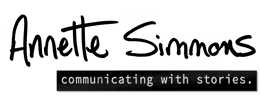Eva asked about “Bait and Switch” Stories…
The first time I used the “bait and switch” method was in my first book, Territorial Games: Understanding and Ending Turf Wars at Work. Without talking too much about that book, I believed some people would buy the book to improve their territorial games so they could crush their “enemy” departments/nemeses like bugs. That was

